Garbz
No longer a newbie, moving up!
- Joined
- Oct 26, 2003
- Messages
- 9,713
- Reaction score
- 203
- Location
- Brisbane, Australia
- Can others edit my Photos
- Photos NOT OK to edit
Those of you who have been paying attention to the Equipment subforum will know I have been bored and decided to find out once and for all how bad filtes are on lenses. http://www.thephotoforum.com/forum/showthread.php?t=100830
Well I'm extending this to another hot topic. Lots of people here talk about storing of RAW files or TIFF files (better idea IMO), or my own personal favourite Large JPEGs. I work with RAWs and PSDs and finally archive in JPEG, and in the true sense of the word they are finished files stored for long term use. I.e. I will never re-open them and edit them for anything other than making a compressed version for email or web posting.
That is me. Others however may wish to re-edit their files in the future. Some people just can't put a file down and it gets constantly played with. I thought I'd have a look at how bad lossy JPEG compression really is:
Method and assumptions:
Firstly I would like to point out I did this test with the intention to break it. The image I chose for it was a sugar glider I photographed recently. Bokeh doesn't compress well with JPEG, the slight noise makes matters worse, the image has a lot of detail in the centre, is sharp, and above all it is mostly blue. Those of you who know how JPEG works and how the eye perceives colours may also know that the blue channel suffers the worst quality hit in JPEG compression.
An action was made in photoshop which opened the file and saved it as a Quality 12 (max possible) standard JPEG. I apologise about the colour the result ended up in my working colour profile ProPhoto so the colours look entirely out of whack on a web browser, but the detail is what we are after here. Those who want to see the image with it's proper colours simply save it and open it in photoshop or another ICC profile aware software, or get a mac and use Safari.
The open and save action was repeated, a lot.
1st Save from RAW, followed by 2,3 and 4:
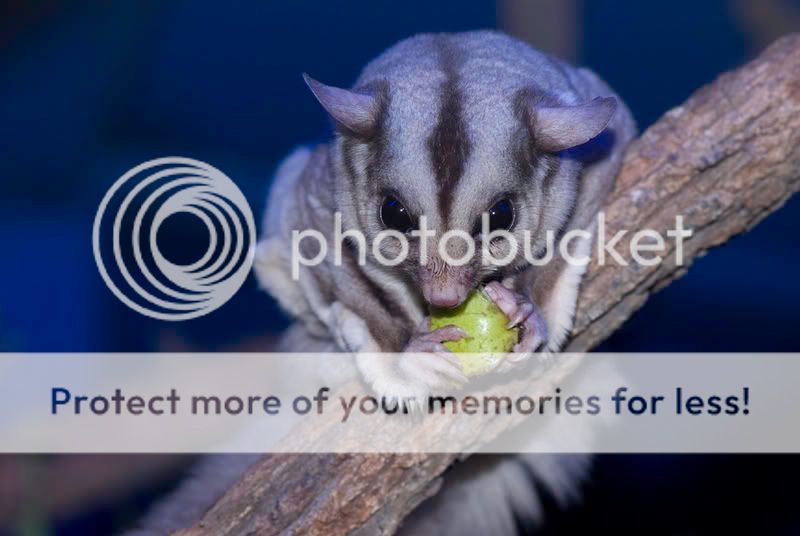
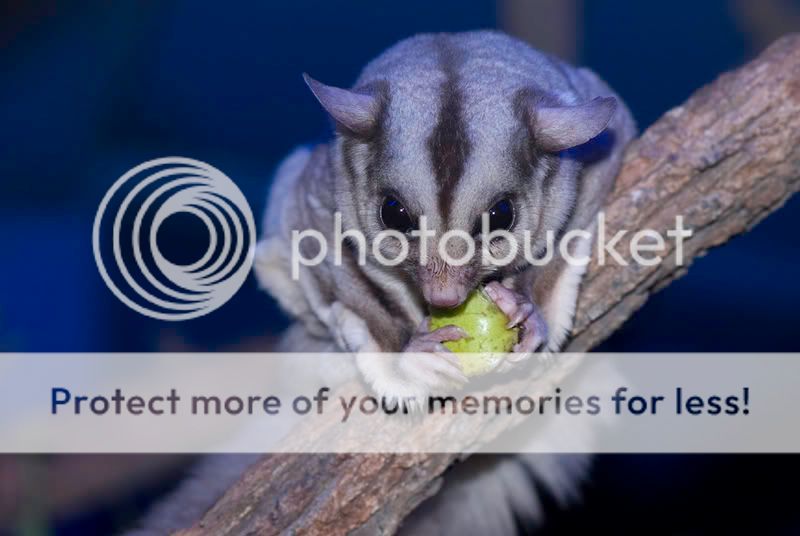
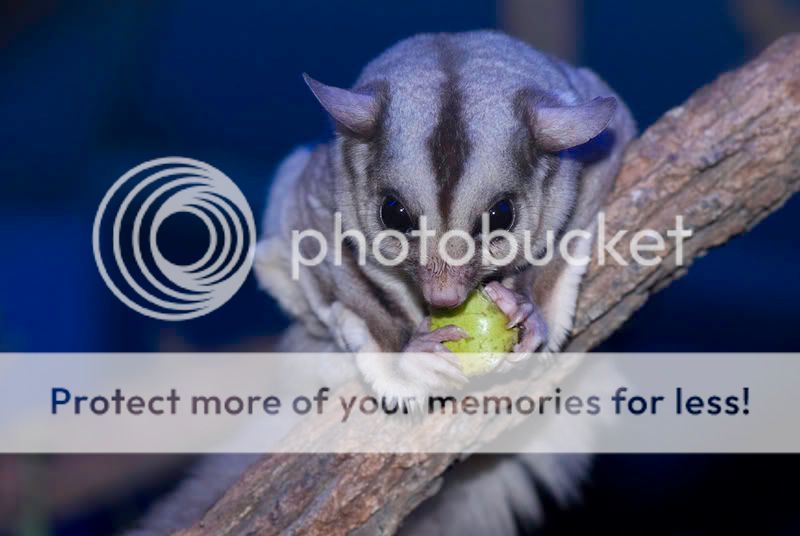
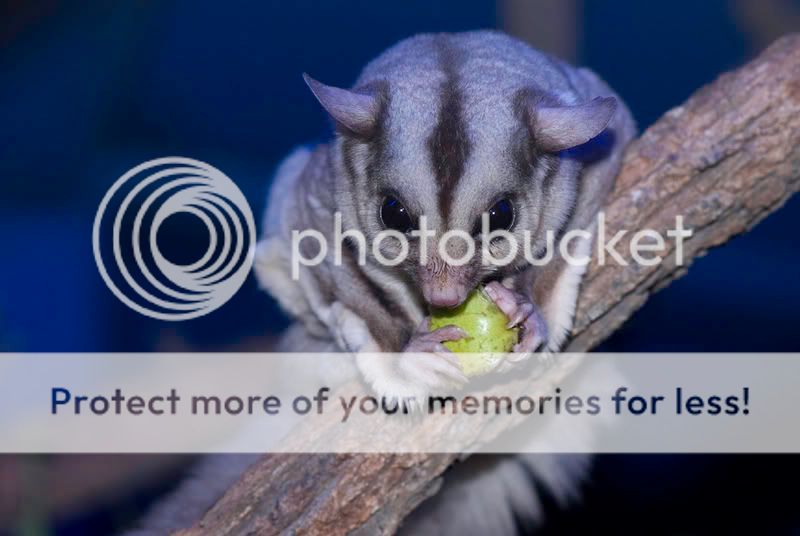
At around the 5th you start noticing some of the gradients are no longer smooth:
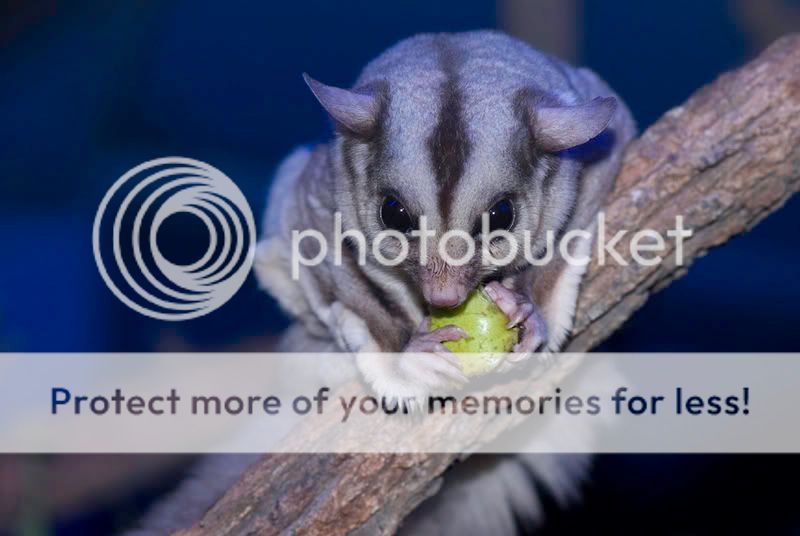
The 10th is starting to look ugly:
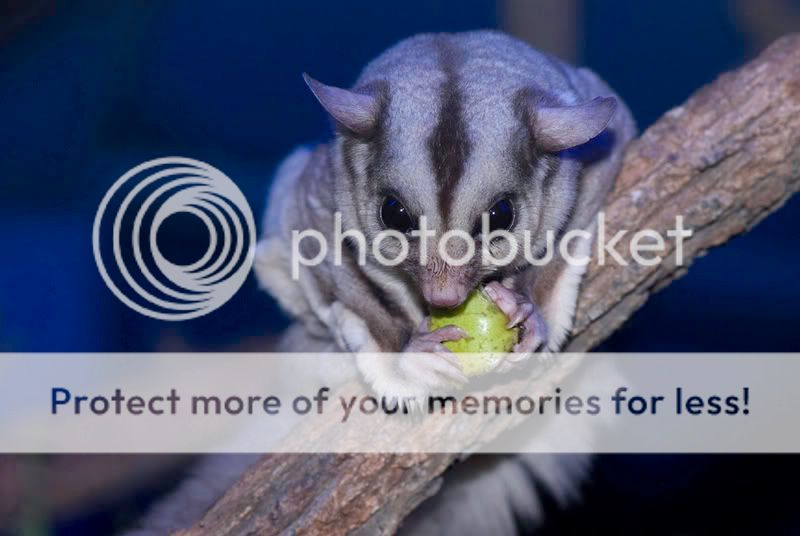
The 25th shows severe compression artefacts:
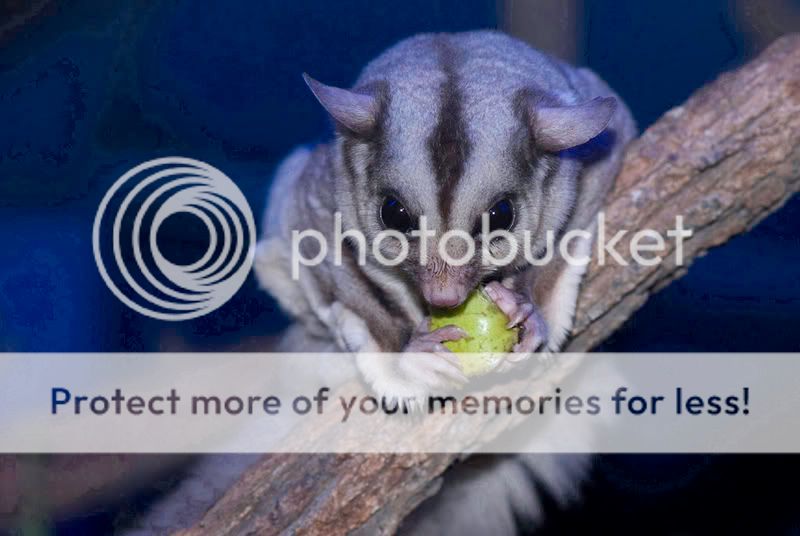
Now at this point it starts getting really problematic. The compression artefacts are starting to eat into the detail on the sugar gliders coat. Image 50:

Finally 99:
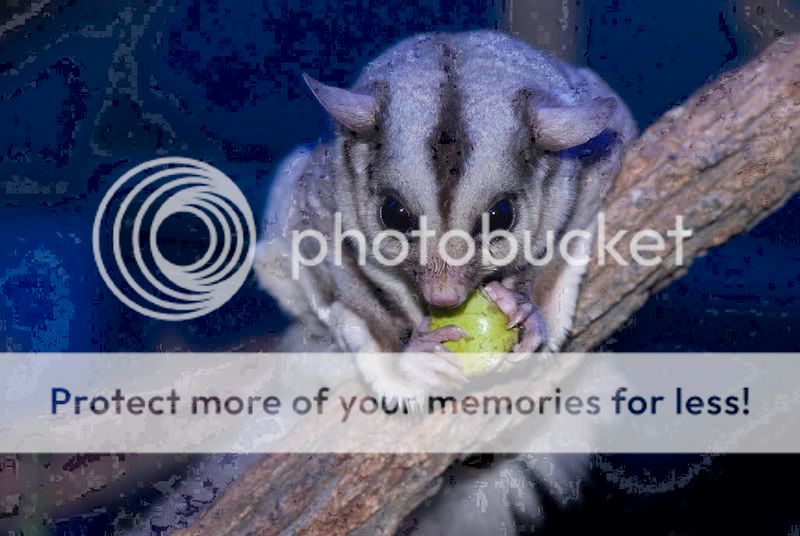
Conclusion:
I started this test with JPEG at Quality 3 and Quality 5, but after seeing the full Quality 12 results there's no need to even post the others. It's known gradients don't compress well, but I was expecting more form a maximum quality JPEG after only 5 saves. It becomes unbearable at 10. If you're inclined to edit your images in the future, JPEG no matter how high quality is simply not the format for you. That said after only 1-2 saves the JPEG looks every bit as good as the RAW original.
Well I'm extending this to another hot topic. Lots of people here talk about storing of RAW files or TIFF files (better idea IMO), or my own personal favourite Large JPEGs. I work with RAWs and PSDs and finally archive in JPEG, and in the true sense of the word they are finished files stored for long term use. I.e. I will never re-open them and edit them for anything other than making a compressed version for email or web posting.
That is me. Others however may wish to re-edit their files in the future. Some people just can't put a file down and it gets constantly played with. I thought I'd have a look at how bad lossy JPEG compression really is:
Method and assumptions:
Firstly I would like to point out I did this test with the intention to break it. The image I chose for it was a sugar glider I photographed recently. Bokeh doesn't compress well with JPEG, the slight noise makes matters worse, the image has a lot of detail in the centre, is sharp, and above all it is mostly blue. Those of you who know how JPEG works and how the eye perceives colours may also know that the blue channel suffers the worst quality hit in JPEG compression.
An action was made in photoshop which opened the file and saved it as a Quality 12 (max possible) standard JPEG. I apologise about the colour the result ended up in my working colour profile ProPhoto so the colours look entirely out of whack on a web browser, but the detail is what we are after here. Those who want to see the image with it's proper colours simply save it and open it in photoshop or another ICC profile aware software, or get a mac and use Safari.
The open and save action was repeated, a lot.
1st Save from RAW, followed by 2,3 and 4:




At around the 5th you start noticing some of the gradients are no longer smooth:

The 10th is starting to look ugly:

The 25th shows severe compression artefacts:

Now at this point it starts getting really problematic. The compression artefacts are starting to eat into the detail on the sugar gliders coat. Image 50:

Finally 99:

Conclusion:
I started this test with JPEG at Quality 3 and Quality 5, but after seeing the full Quality 12 results there's no need to even post the others. It's known gradients don't compress well, but I was expecting more form a maximum quality JPEG after only 5 saves. It becomes unbearable at 10. If you're inclined to edit your images in the future, JPEG no matter how high quality is simply not the format for you. That said after only 1-2 saves the JPEG looks every bit as good as the RAW original.

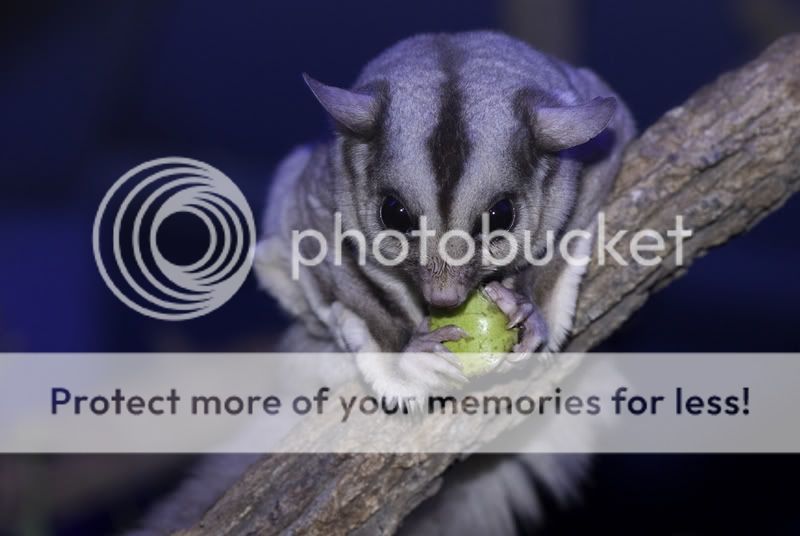
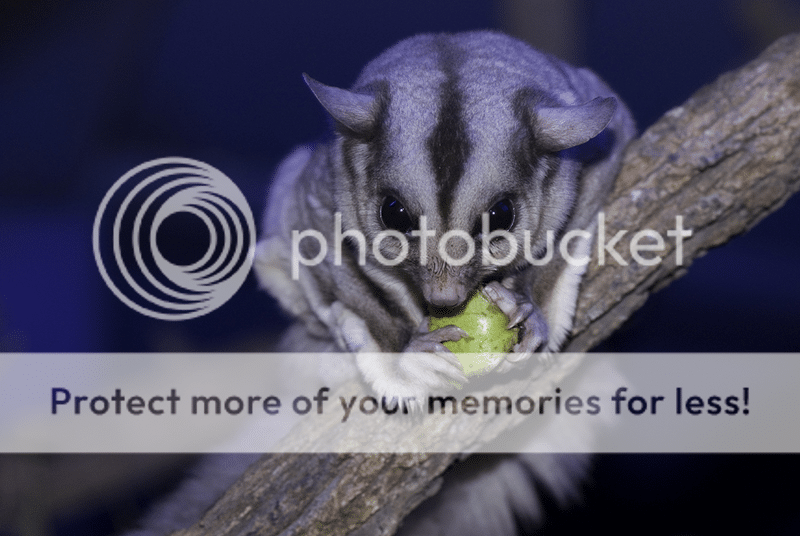
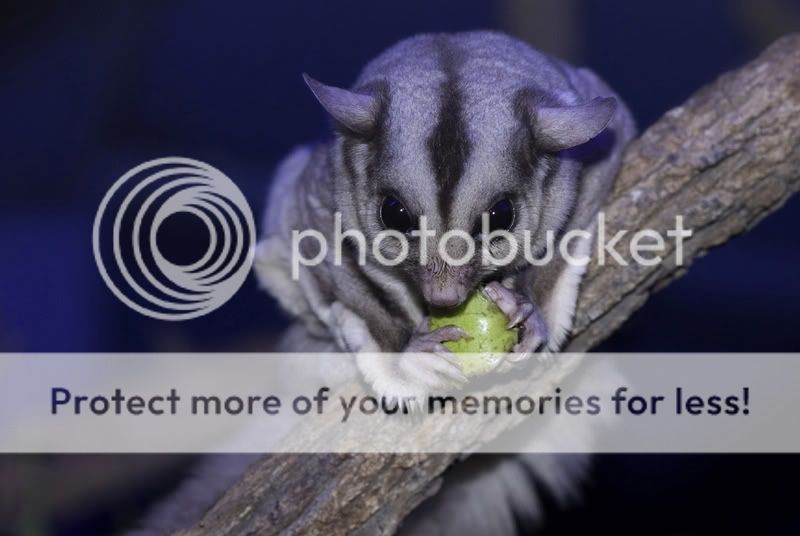
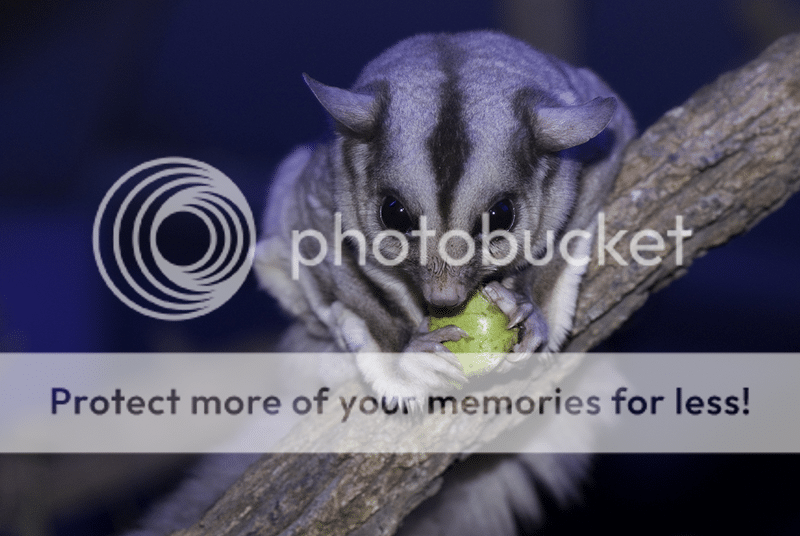
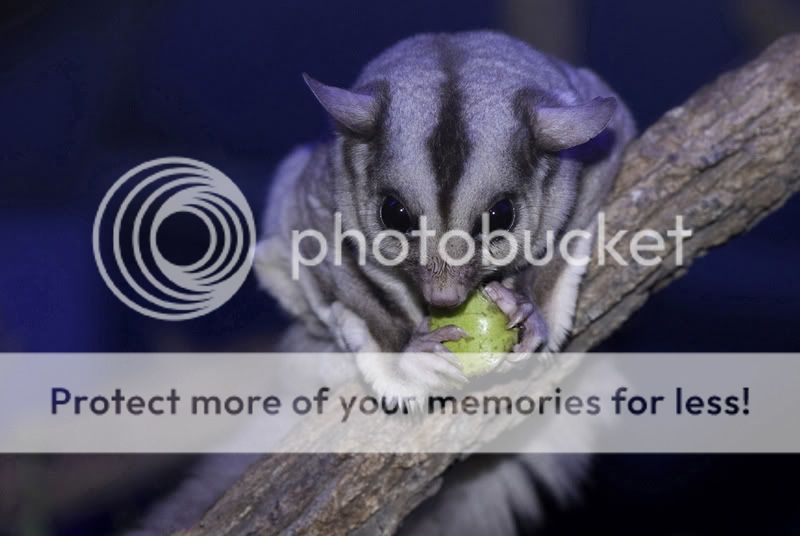
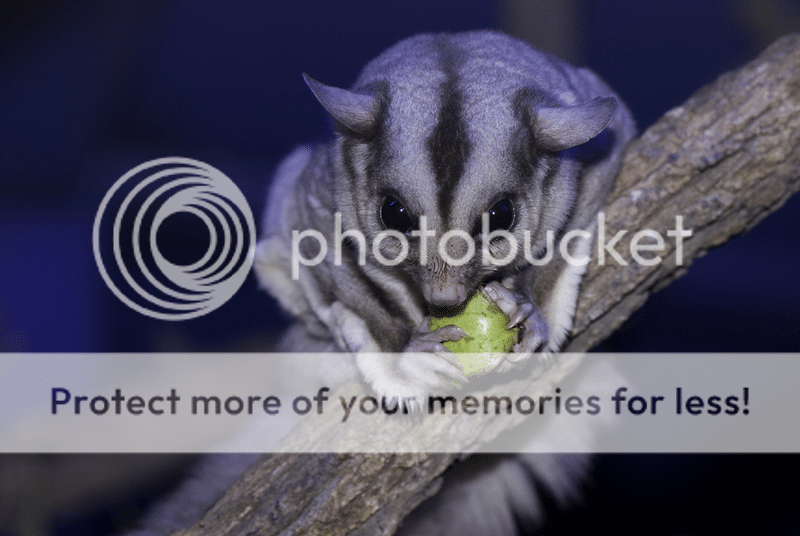
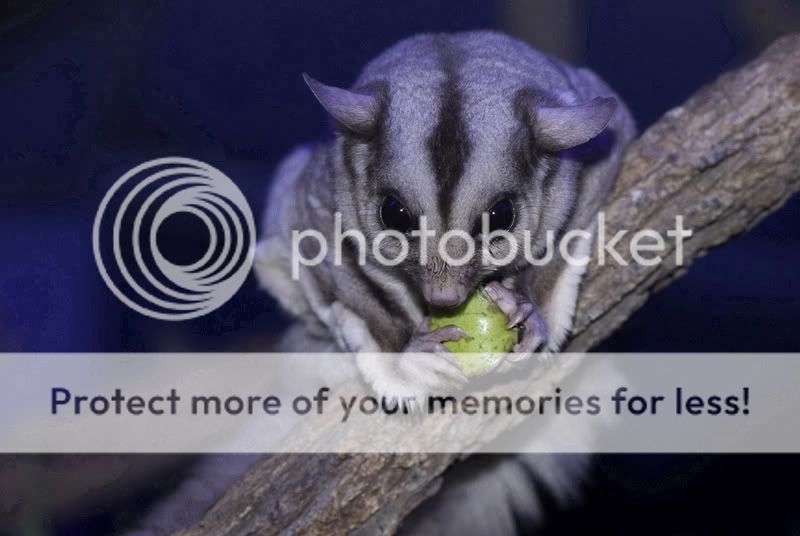
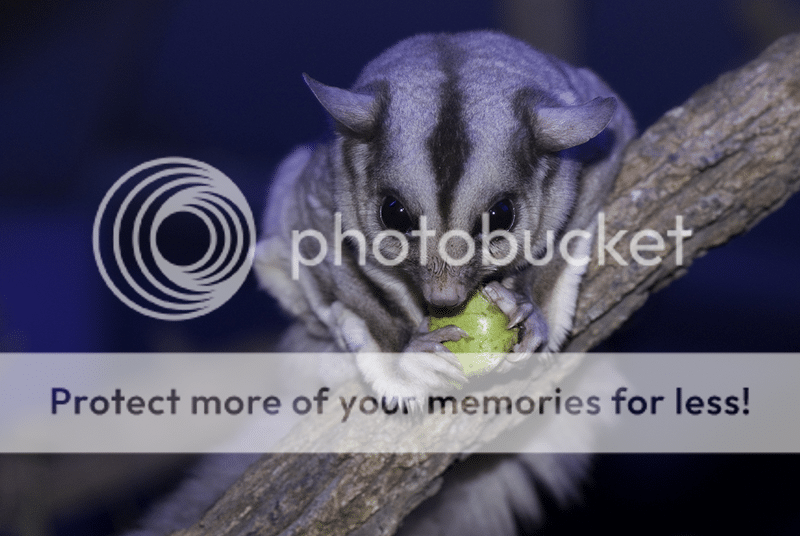










![[No title]](/data/xfmg/thumbnail/37/37606-3c9ffb5906173fa2aa489341967e1468.jpg?1734170733)

